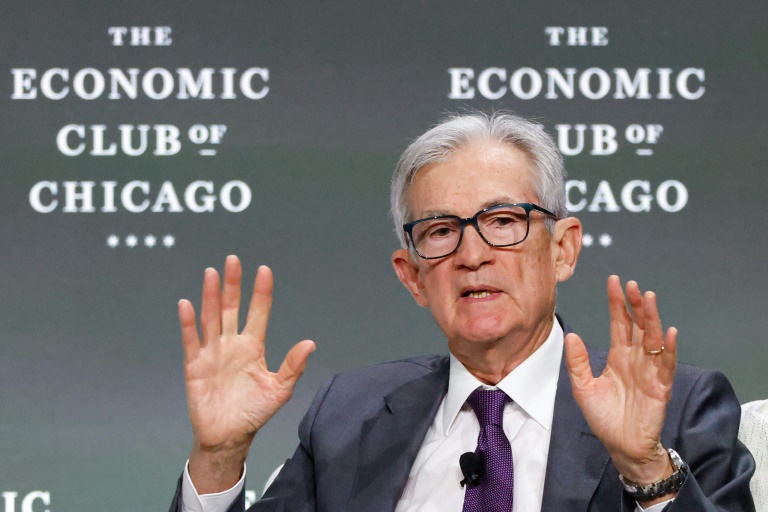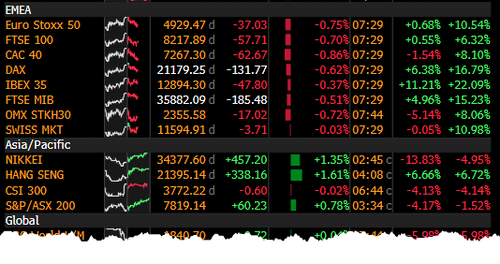seb_ra/iStock via Getty Images To My Partners and Friends: Black Bear Value Fund, LP (the “Fund”) returned +0.8% in March and -1.3% year-to-date.
The S&P 500 returned -5.7% in March and -4.3% year-to-date.

The HFRI Index returned -2.0% in March and -0.5% year-to-date.
We do not seek to mimic the returns of the S&P 500 and there will be variances in our performance. Note: Additional historical performance can be found on our tear-sheet. Extreme volatility has re-entered the stock market.
It is curious when portfolio managers decry a volatile market, as it is generally the most fertile setup to find interesting investments. While it is too soon to have any firm tariff conclusions, I have been re-examining our portfolio to sanity check our investments amid a range of outcomes. In anticipation of the tariff announcements, we sold some businesses that would provide a “good” return for the possibility of finding businesses with potential “great” returns.
This decision coupled with our short portfolio has allowed us to play offense when others are in retreat and not experience as dramatic a draw-down as the broader indices (so far). Taken at face value, tariffs will likely slow economic growth, decrease corporate confidence in decision-making, increase prices and shake up supply chains, among other consequences. While this will be an uncomfortable period, it will benefit the companies that have some combination of pricing power, healthy capital structures, staying power, low cost-advantages and capable management.
It seems premature to jump to dramatic conclusions as the range of outcomes is quite wide. If you own businesses with staying power (We do) it’s an awesome opportunity to take advantage of sellers who have their hair on fire. On the flipside, the businesses we are short are subject to weak capital structures, lack of pricing power and other assorted maladies making them dramatically riskier.
Top 5 Businesses We Own (Alphabetical) Asbury Group operates auto dealerships across the United States. The strength of the model comes from the back of the house in parts and services where more than 50% of the profits come from. Tariffs will increase the cost of an automobile, reducing the affordability for both new and used cars (holding all else equal).
Some of this will be mitigated by a highly variable component to ABG’s wage expense. Some damage may also be mitigated by increased activity in the Parts & Service division. Most dealers currently have 1-2 months of used inventory and 2-3 months of new inventory on their lots.
The impact of tariffs could take some time to be felt and its uncertain if there will be tax credits/interest deductibility to lessen the pain on American consumers. ABG should be able to earn $20-$30 in free-cash flow per share in a “normal” year. I have reduced some of my estimates given the uncertain nature of the environment.
At quarter-end pricing, that implies a 9-14% annual yield. BLDR is a manufacturer and supplier of building materials with a focus on residential construction. Historically, this business was cyclical with minimal pricing power as the primary products sold were lumber and other non-value-add housing materials.
Since the GFC, BLDR has focused on growing their value-add business that is now 40%+ of the topline. The company has modest leverage and has been using their abundant free-cash-flow to buy in over 45% of the stock in the last 33 months. Our long-term thesis remains intact, as there is a structural shortage of housing in the USA.
Higher mortgage rates reduce the supply of existing home supply as homeowners are locked into low-rate mortgages. As we have seen in recent history, the overall pie of housing activity may shrink, with new homebuilders capturing an increasing share of home sales. Homebuilders can buy-down the mortgage to a lower rate and accept a lower, yet still healthy, margin on the home sale.
Past letters have commented that the coming 6-12 months could be rocky, and BLDR (the stock) has not disappointed. The business continues to perform well, and management continues to reduce the share count, thereby increasing our ownership. The company has sustained higher gross margins as they have gained scale.
I estimate normalized free cash flow per share to be $10-$15 per year, implying a free-cash-flow yield of 8-12% with no growth priced in. Core is the result of the merger between Consol and Arch Resources. As a combined entity, they are one of the leading producers of metallurgical coal (steel) and thermal coal (energy).
The Company is heavily dependent on exports, so retaliatory tariffs would be damaging. At the same time, there has been a reduction in global capacity, so many countries may not have much choice, especially if they need higher quality coal. Met coal demand is projected to climb for the next 25 years, driven by the economic development and urbanization in India and the rest of Southeast Asia.
~60% of the world’s population lives in Asia, where met coal demand is centered and where local sources are limited. Over the coming years demand will likely outstrip supply, leading to higher prices. There has been a severe lack of investment in met coal due to ESG concerns with investment peaking in 2014.
I will disclose my updated valuation thoughts at a later date, as I find the investment extremely compelling, and I am hoping the Company can buy back ever cheaper stock. As a reminder, this is a Company with a fortress balance sheet and is one of the cheapest producers in the market. While short-term pain hurts all Companies, they can be major long-term beneficiaries.
Please reference the met coal discussion above, as it applies to Warrior Met Coal. Currently, the bulk of HCC’s FCF is being invested in a capital project that will be concluding this year. Once the business winds down their investment period, they will gush cash.
I will disclose my updated valuation at a later date. I am travelling to Alabama next week to meet with management and should learn a lot more about their prospects. This is one of the most compelling ideas in our portfolio.
As a reminder, this is a Company with a fortress balance sheet and is one of the cheapest producers in the market. While short-term pain hurts all Companies, they can be major long-term beneficiaries. Flagstar Financial is the former New York Community Bank (a mashup of Flagstar Bank, New York Community Bank and assets from Signature Bank).
Like our SHORT investments in Silicon Valley Bank and First Republic, FLG had a hole in their balance sheet (from soured multifamily and office real estate vs. long-duration securities). That is where the similarities end.
FLG raised over $1BB in additional capital, led by former Treasury Secretary Steven Mnuchin. They revamped the management team and brought in a superstar CEO in Joseph Otting who successfully turned around OneWest Bank post GFC (formerly known as IndyMac Bank). In 12 months, the management team has accomplished more than most teams can do in 2+ years.
They have reviewed nearly all the loans on the books, sold off non-core assets raising additional capital and are focused on delivering a narrowly-focused, well-capitalized boring regional bank. In this case, boring is good. Importantly, they have taken a conservative view of their loan book and a large credit reserve.
This contrasts with several bank/private credit lenders we are short who have taken minimal reserves. Mr. Otting and his team are my kind of managers – they are plain-spoken, hardworking and plan for the worst while hoping for the best.
At quarter-end, the bank was trading at ~67% of a conservatively marked balance sheet. This is in contrast with similar banks (who are NOT conservatively marked) trading at 140-160% of their tangible book value. FLG should complete working thru the bulk of their issues by the end of 2025 and approach “normal” during 2026.
Given the conservative nature of the management team, I wouldn’t be surprised if it happened sooner. At these prices the downside seems minimal and could see this business up 50-150% over the next 1-3 years as it is more appropriately valued. Concluding Thoughts It is often the most uncomfortable environments that provide the best opportunities.
The fog of uncertainty causes many to hide and wait for the “all-clear”. If you have been contemplating adding or joining our Partnership, this is an attractive time. If you are contemplating adding capital, please make sure you have a multi-year horizon in mind, as that is the nature of our Partnership.
Our edge comes from an ability to look out further than most and ride out the short-term roller coaster of momentum and negative investor psychology. When we look back at our portfolio a year from now, I think we’ll be pleased with the fundamental performance of our businesses, despite an uneasy macroeconomic environment. I also think we’ll see our management teams taking aggressive actions to both manage the businesses appropriately as well as allocate capital in a shareholder-friendly manner.
While it is an extremely hectic news environment, these are the kinds of climates that are the most fun. We know what we own and are sober/objective in our reasoning and will stand to do well in the coming years. Please reach out if the Fund is of further interest.
Thank you for your trust and support. Black Bear Value Partners, LP Original Post Editor's Note: The summary bullets for this article were chosen by Seeking Alpha editors..
















